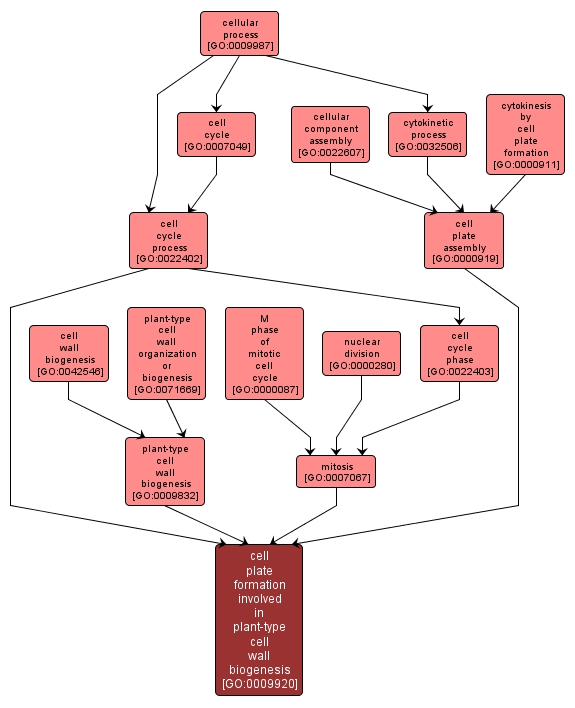GO TERM SUMMARY
|
| Name: |
cell plate formation involved in plant-type cell wall biogenesis |
| Acc: |
GO:0009920 |
| Aspect: |
Biological Process |
| Desc: |
The cell cycle process whereby the cell plate is formed at the equator of the spindle in the dividing cells during early telophase. An example of this is found in Arabidopsis thaliana. |
Synonyms:
- cell plate formation involved in cellulose and pectin-containing cell wall biogenesis
|
|

|
INTERACTIVE GO GRAPH
|














